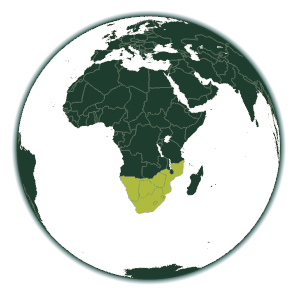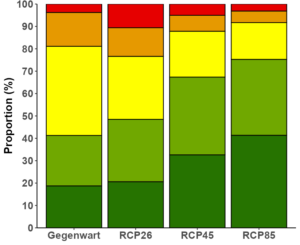Lagarosiphon major
Curly Waterweed
Lagarosiphon major is a submerged aquatic plant that originates from South Africa. The plant can grow up to 5 metres long and forms dense mats on the water surface. L. major is characterised by its dense, spirally arranged leaves, which are around 1 cm long and pointed. The plant rarely flowers and when it does, it is usually only on the water surface. The flowers are small and white, with the female flowers remaining on the plant and the male flowers drifting off at the surface. Reproduction is primarily vegetative, with individual plant parts breaking off to form new plants. It prefers stagnant and slow-flowing waters and is tolerant of changing environmental conditions, including different water temperatures and qualities. In Europe and other parts of the world where it has been introduced, it can spread rapidly and quickly forms large carpets on the water surface, competing with native aquatic plants and disturbing the ecological balance of water bodies.
Types of damage
Region of origin
Southern Africa

Introduction vectors
Current distribution
Based on the FlorKart Database of the Federal Agency for Nature Conservation, as of 2013
Miscellaneous
Dispersion forecast
Indicates the proportion of land suitable for habitat under current and future climate conditions (2060-2080) under three emission scenarios (RCP26, RCP45 & RCP85).

Habitat suitability under current climate conditions
These habitat suitability maps show for Lagarosiphon major where suitable habitat conditions exist.
The map on the left shows this for current climate conditions. Below this are maps for the time classes 2040-2060 and 2061-2080, in which three different emission scenarios can be selected.
The slider at the top left allows you to adjust the opacity of the map to make orientation easier.
By clicking on the respective quadrant, information on the environmental conditions present in it can be called up.
The methodology is explained here .











